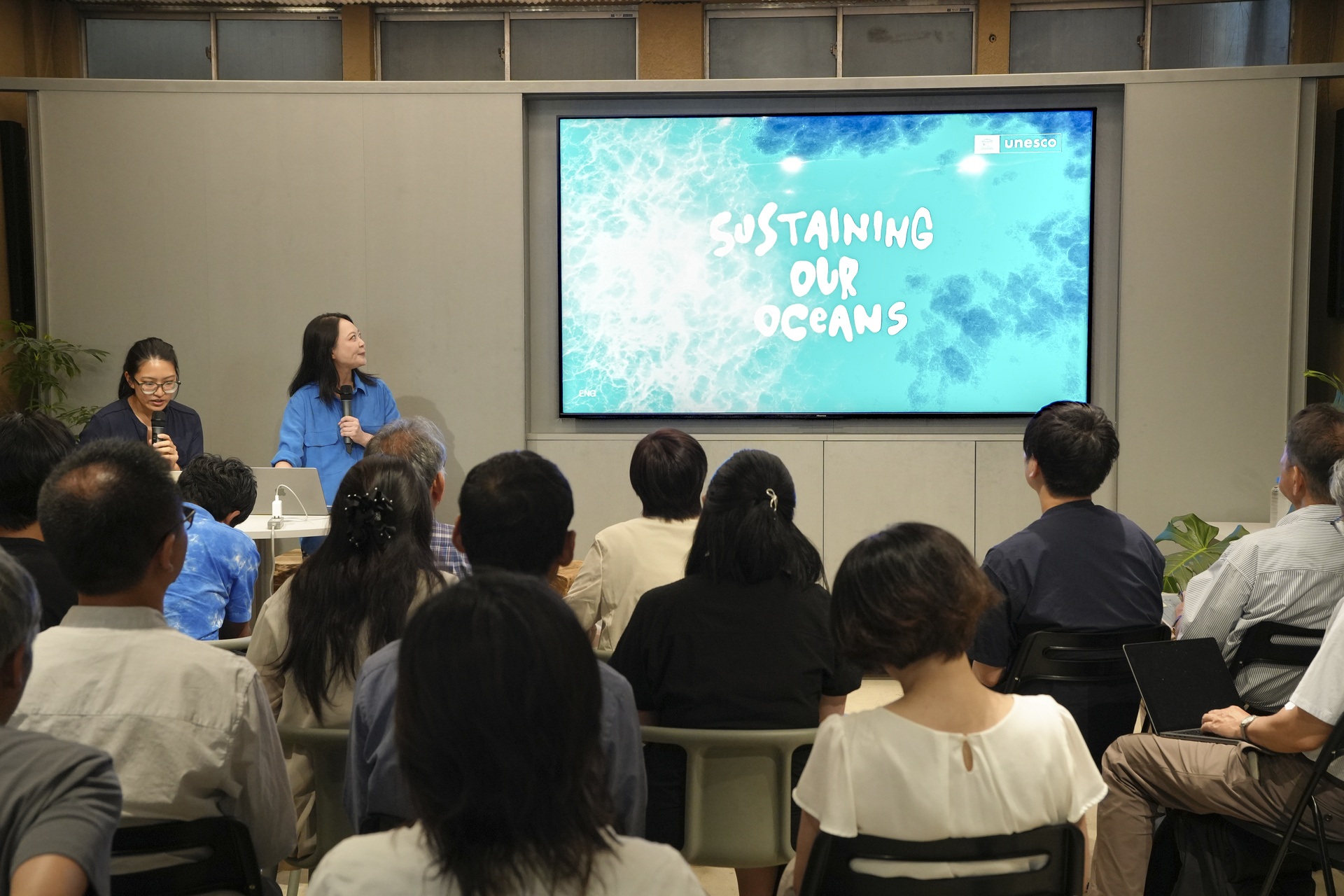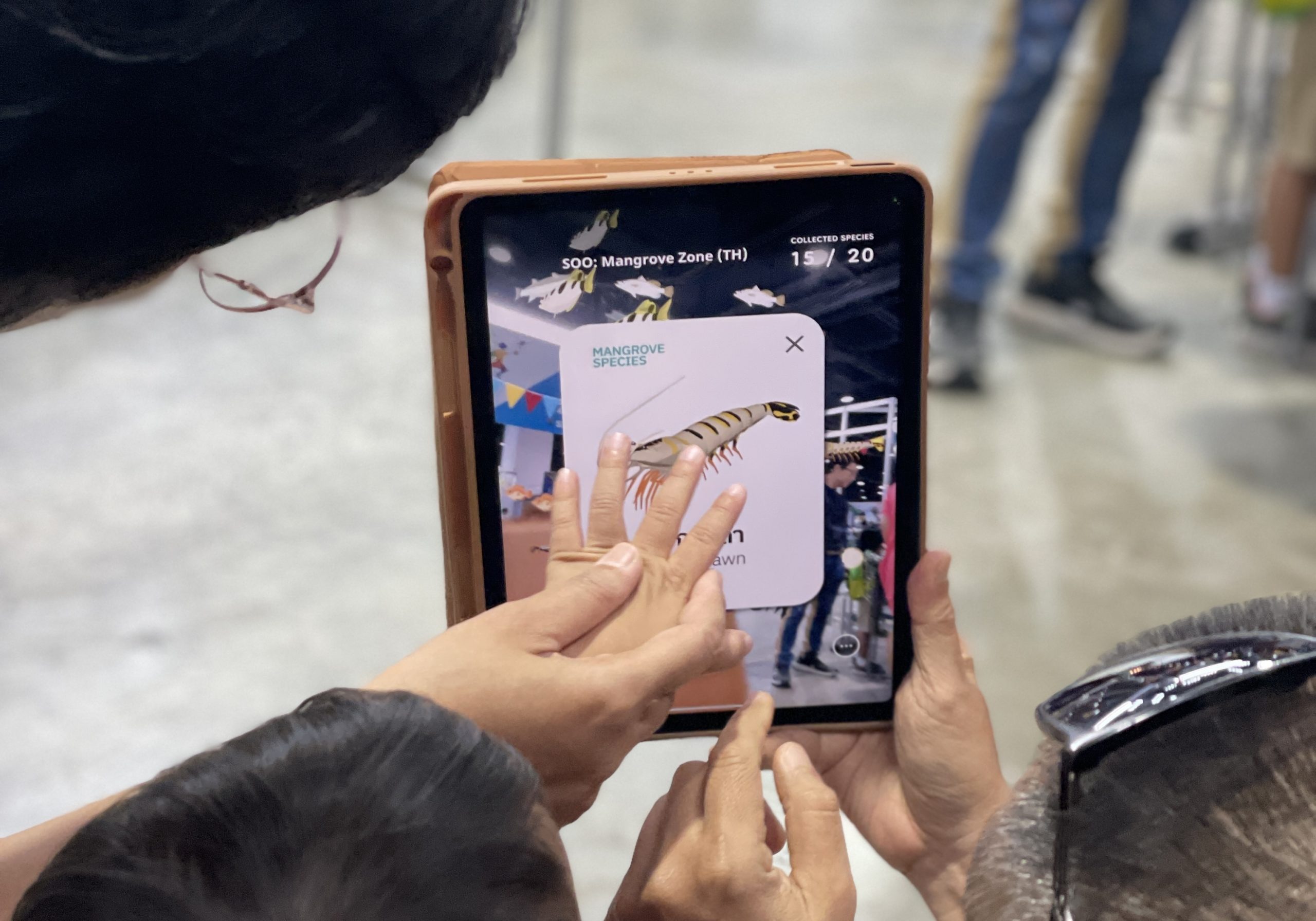Project Case
October 15, 2025
FabCafe Global Editorial Team
Ocean ecosystems around the world face dire threats from climate change, resource exploitation, and disruption by human activities. For young people trying to confront these challenges, education is a first key step, but in many places, marine education remains inadequate and fails to reflect the specific needs of local communities. It is essential to equip young people with knowledge of their local marine ecosystems as well as the livelihoods that depend on them. Making coastal living more sustainable starts with a healthy understanding and respect for the relationships between people and their oceans. One project addressing these issues, particularly in Southeast Asia, is Sustaining Our Oceans: Building Healthy Relationships with Oceans in South-East Asia through Education for Sustainable Development (SOO) by UNESCO, powered by FabCafe Bangkok.
The SOO Project is a marine education project aiming to inspire young people in Southeast Asia and Japan to become ocean champions. Developed through a partnership between UNESCO and Fast Retailing Co. Ltd., the parent company of UNIQLO, the project will provide dynamic, field-based learning experiences, using a range of educational tools designed to foster practical skills and knowledge in ocean conservation.
The SOO project is officially recognized as an activity of the United Nations’ Decade of Ocean Science for Sustainable Development (Ocean Decade 2021-2030), a worldwide initiative that provides a common framework for diverse stakeholders to collaborate and innovate in marine science to address ongoing threats to the ocean environment. Led by the UNESCO Intergovernmental Oceanographic Commission (IOC), Ocean Decade promotes the global advancement of ocean literacy and action through education.
Thailand is blessed with rich natural resources but faces complex environmental, social, and economic challenges. FabCafe Bangkok has focused on addressing these challenges by adopting a hackathon format that encourages diverse people to collaboratively create solutions within a short period of time. These hackathons address one or more of three core pillars: finding impactful solutions to deep-rooted issues, bridging digital divides through STEM, and educating with extended reality (XR).
About FabCafe Bangkok
| FabCafe Bangkok opened in the Ekkamai area in 2015 and moved to the Thailand Creative & Design Center (TCDC) in 2019. Like other FabCafes around the world, its mission is to foster a “maker spirit,” turning ideas into reality and promoting cross-disciplinary collaboration. Over the past 10 years, it has hosted more than 2,000 events and co-created with over 10,000 creators across Thailand. Its activities range from international projects with embassies, government-led programs, and innovation support for companies, to startup incubation, all while consistently working at the intersection of technology, design, and sustainability. | 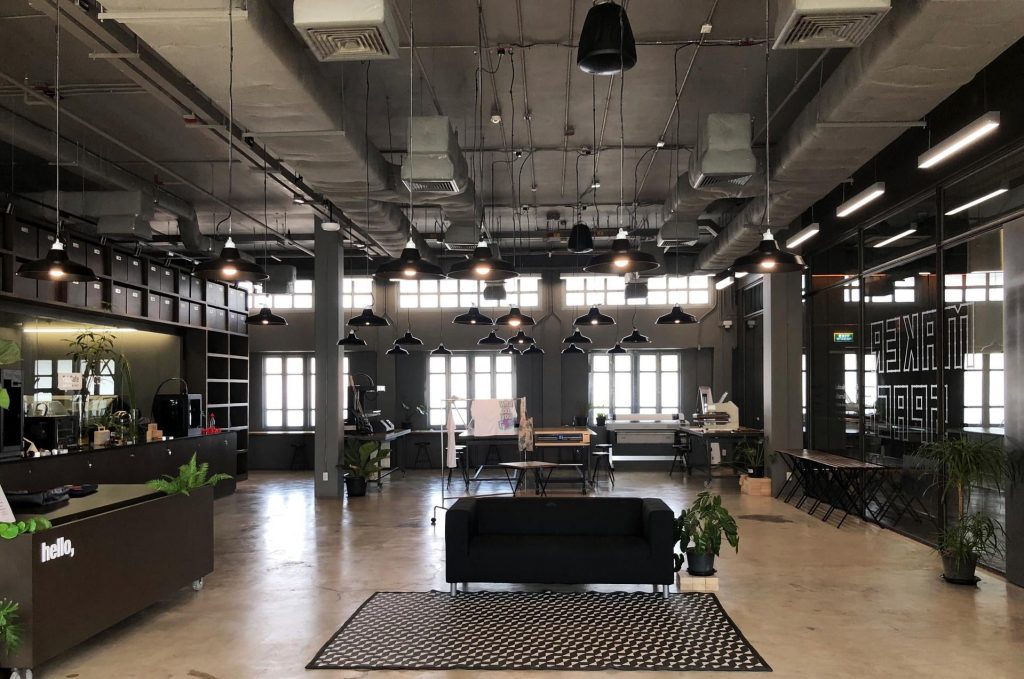 |
One of the standout projects FabCafe Bangkok has been involved in recently is the Sustaining Our Oceans Project. Research conducted by FabCafe Bangkok in Thai schools revealed that students lacked ocean literacy. Teachers requested methods to communicate this knowledge in an engaging way, while students raised questions such as about potential career paths that leverage ocean literacy, or practical ways to coexist with the ocean in their daily lives. FabCafe Bangkok was responsible for designing the educational experience in Thailand, particularly collaborating with the UNESCO Ranong Biosphere Reserve and local schools to create learning opportunities deeply rooted in the local context.
FabCafe Bangkok and UNESCO, in collaboration with students and teachers, designed three modules for the SOO Program. The SOO project is structured around three key steps: Know, Empathize, and Coexist, allowing participants to gradually learn about the relationship between the ocean and humans. Each module is designed to treat the ocean as a friend; they guide participants through a journey of understanding the ocean, connecting emotionally with its challenges, and ultimately learning how to live in harmony with it.
The first module, Get to Know, introduces the Diving Library, an interactive learning tool that leverages augmented reality (AR) and virtual reality (VR) technology to engage young people. Using the Andaman Sea Diving Library, participants explore interconnected marine ecosystems such as mangroves, coral reefs, and the deep sea. Incorporating VR and AR enhances learners’ motivation by providing an immersive experience that helps them understand firsthand why biodiversity is crucial for the health of ocean ecosystems.
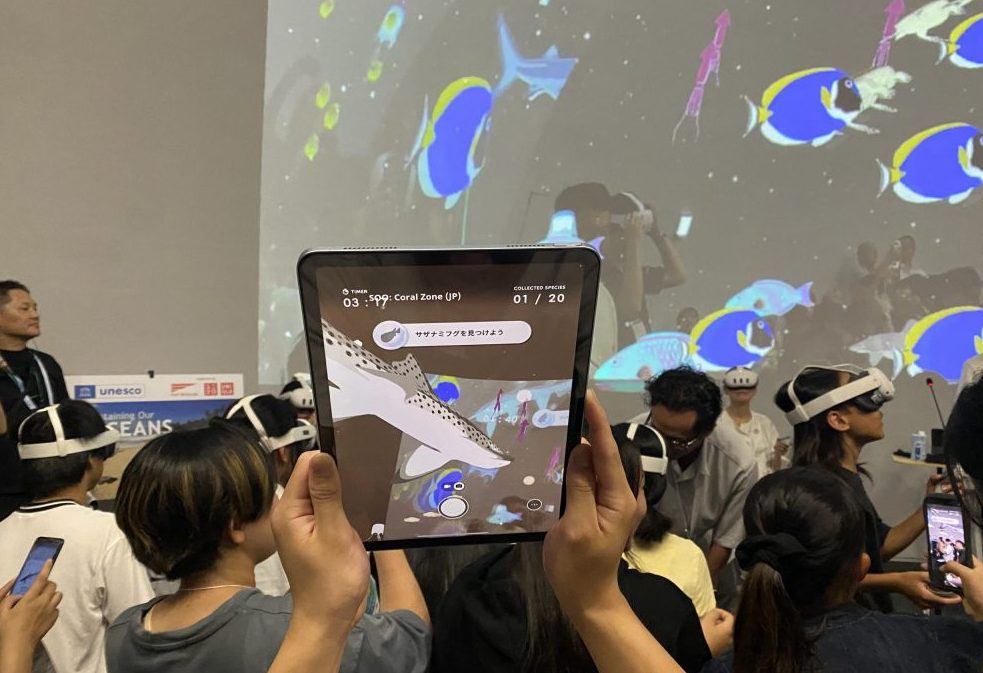
In Diving Library, must restore a mangrove forest to recreate a habitat suitable for its native ecosystem. They can learn about the various creatures that inhabit beautiful coral reefs.
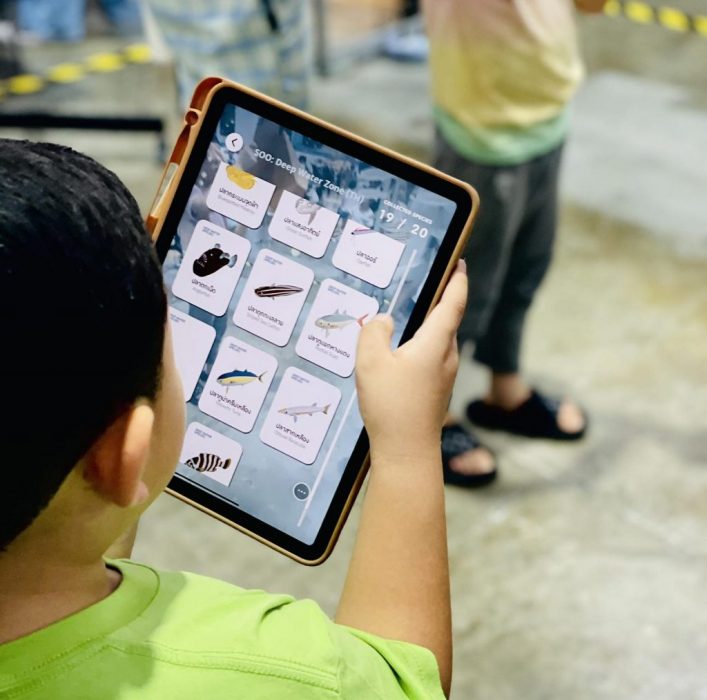
Diving Library teaches users about marine life as well as the environmental challenges facing the ocean. The species they find are collected as digital cards, over 100 in all.
In the next module, Ocean Challenge, students engage with fifteen local environmental issues such as plastic waste and overfishing through research, discussion, and proposal-making. This exercise helps them recognize connections between their lives and the ocean, fostering their ability to think critically about solving local challenges.
According to Kalaya, when first asked about marine environmental issues, students only brought up more limited topics such as waste. To help students better understand the broad scope of marine challenges, Ocean Challenge organizes ocean-related issues into three categories: Pollution and Waste, Climate Change and Ocean Health, and Habitat Degradation.

In the Ocean Challenge, students are guided to identify fifteen local environmental issues, such as plastic waste, overfishing, and coastal development.
In this module, students would be working in teams, taking on the role of detectives as they investigate issues facing our oceans. They would begin by identifying the challenges present in an AR ocean model. The activity encourages students to explore and create discussion whether similar issues exist in their own area, leading them to engage in ideation to brainstorm potential solutions. Afterward, they prioritize the proposed solutions and discuss how to invest allocated funds to address the most urgent challenges. In the final step, students learn how their ideas are evaluated and assessed.
In the third module, Coexist, students use the Field Lab Toolkit to explore examples of sustainable coexistence with the ocean, focusing on the restoration of mangroves in the Ranong region. Through hands-on learning about soft-shell crab farming, traditional kapi shrimp paste production, and crafts made from local plants, students investigate how environmental conservation and economic activity can coexist in harmony with nature.

Speaking on the importance of experiential learning, Kalaya says, “It is important to leave the classroom and go out to speak with the local people.”
In this module, students create worksheets that they can use to interview local community members about marine environmental issues. In practice, students filled out these worksheets while conducting research on environmental problems.

Students fill out the sheet with information about the types of shrimp used in traditional kapi making and how the shrimp are harvested.
Once the worksheets are filled out, students can reflect on how each community coexists with the ocean.
On 21 July, a prototype of the Andaman Sea Diving Library created by FabCafe Bangkok was presented at the EXPO 2025 Osaka, Japan, at the UN Pavilion. The experience at the EXPO was facilitated by Chonthicha Arunrungkaokai, a creative technologist at FabCafe Bangkok, and students had the opportunity to experience the tool firsthand. Participants also engaged in hands-on learning experiences, exploring cultures, technologies, and sustainable practices from around the world.
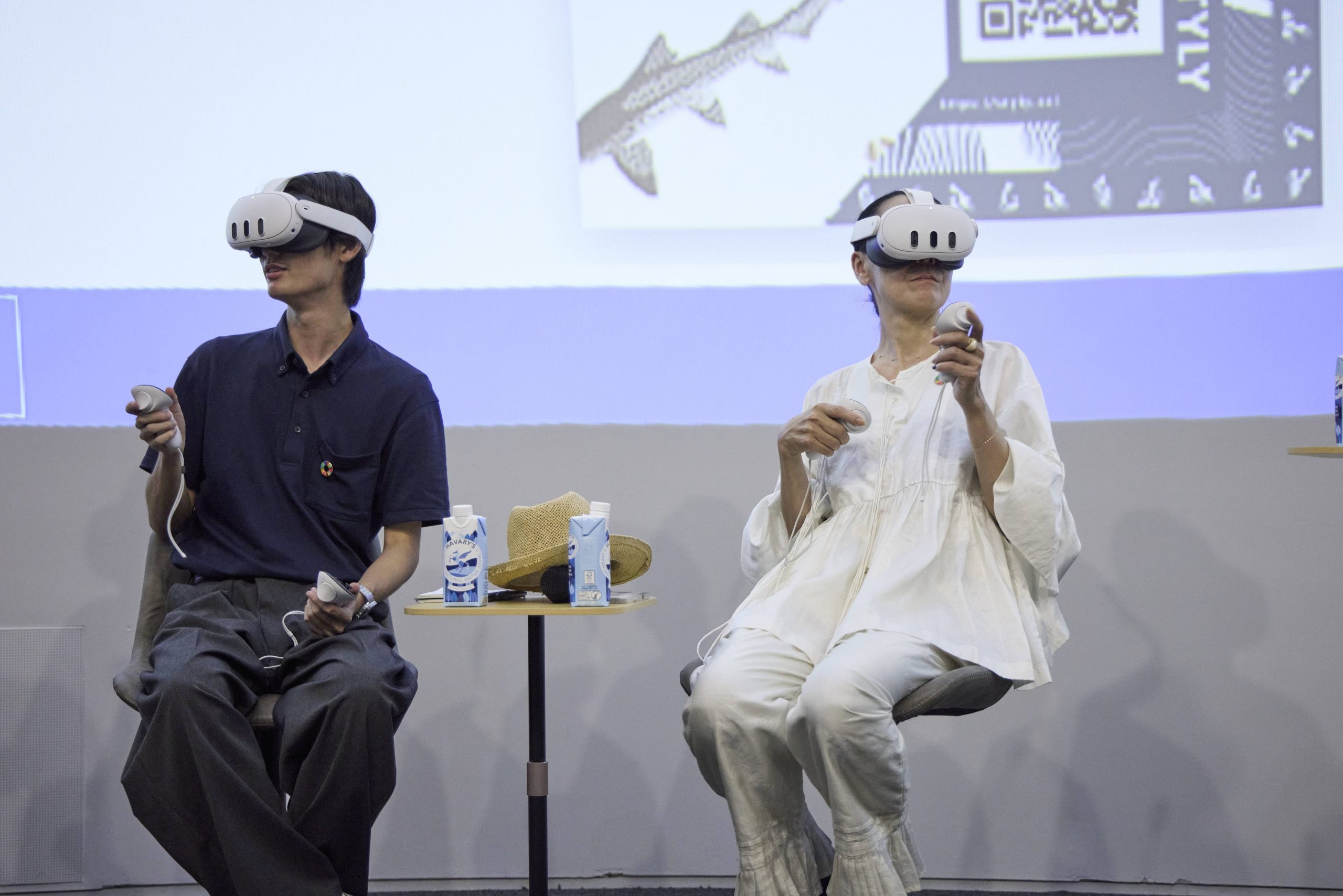
Photo: UNIQLO
Chonthicha Arunrungkaokai
| Creative Technologist at FabCafe Bangkok
Chonticha pursued her undergraduate degree in Architecture at Thammasat University, where her focus and interest revolved around design and technology, particularly in the realm of robotics. Her past endeavors featured her significant role in creating Extended Reality experiences for UNESCO’s NEWVIEW XR FieldLAB, Boost Play Measure project, and the AI Last Photo project showcased at Death Fest. Building on this foundation, she contributes to the Sustaining Our Oceans Project, a collaborative initiative that applies immersive AR/VR technologies to transform ocean literacy, creating educational tools that enable students to explore marine ecosystems while fostering scientific understanding and environmental responsibility. |
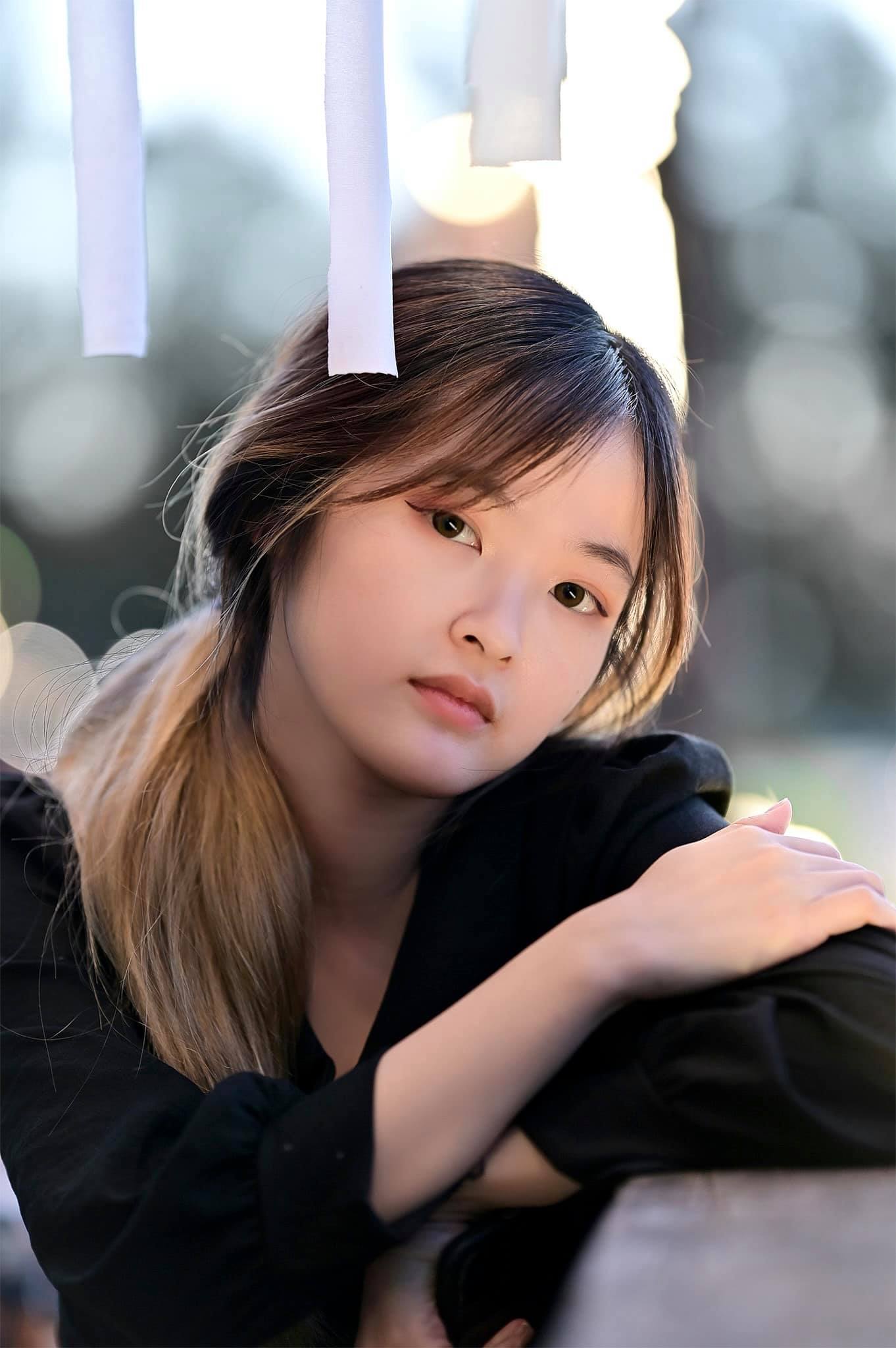 |
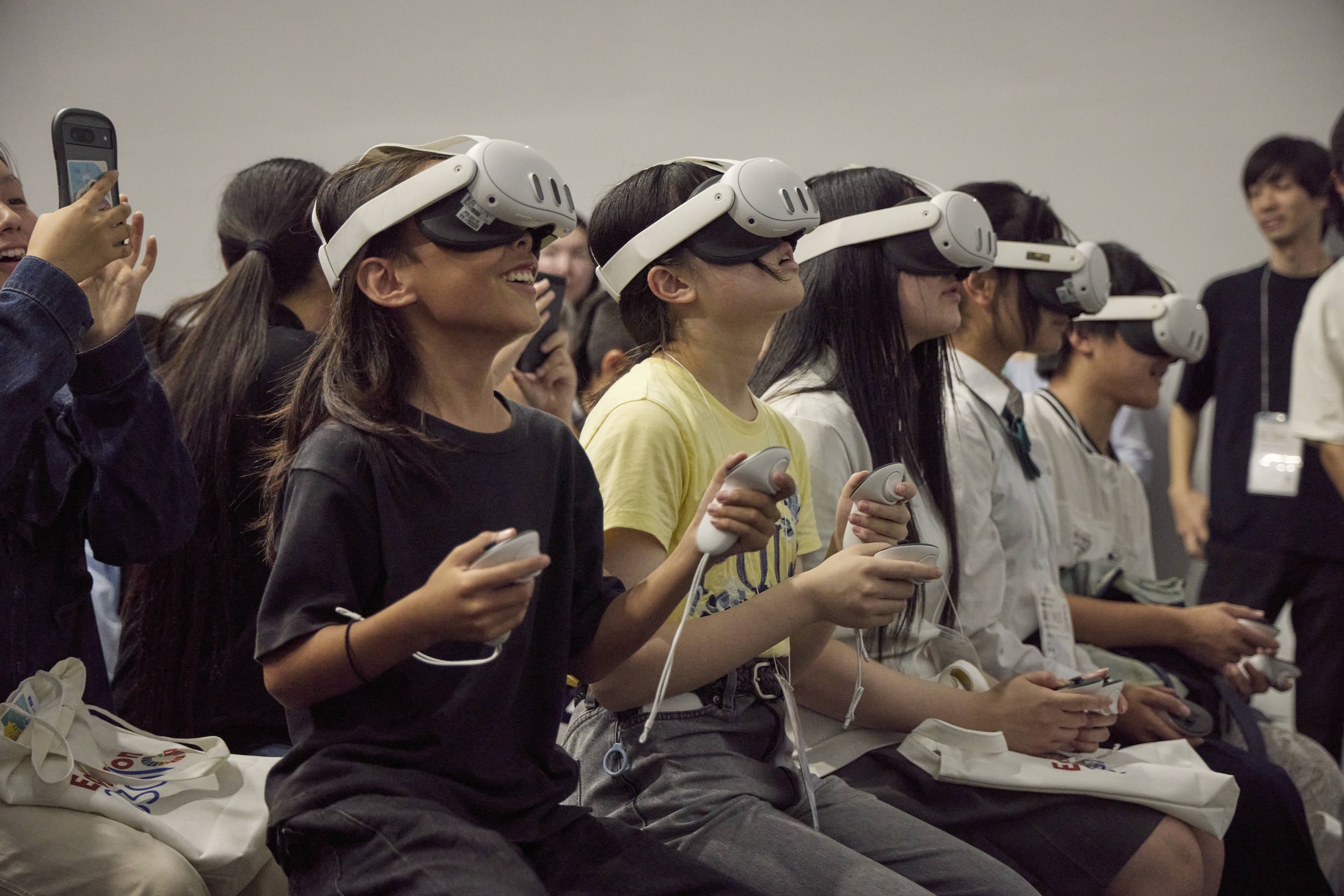
Photo: UNIQLO
Kashu Nakagawa, a guest speaker at the UN Pavilion from the Tokyo University of Marine Science and Technology, as well as the Innovation Group of Aquatic Nature, shared his thoughts on a VR game experience. He found three aspects of it particularly excellent.
Firstly, he was impressed by the immersive realism of the fish, which closely resembled real diving conditions. As a licensed diver, he appreciated the attention to detail in the depiction of scales, fins and lateral lines. Unlike diving, the game allowed users to enjoy the experience without worrying about tank pressure or time.
Secondly, he praised the game’s educational value, with simple rules that engaged both adults and children. It allowed players to learn about the shapes and names of fish while offering more detailed information for those who were interested, thus fostering spontaneous information gathering.
Thirdly, the game’s accessibility: it could be played on smartphones, enabling students to easily share their progress and compete with one another when VR goggles were unavailable.
The tool was showcased at Osaka EXPO again in a special exhibition from 22 to 28 September.
The SOO Project represents another successful XR project and exhibition by FabCafe Bangkok, whose past collaborations with UNESCO include the Heritage Ghost Project and the NEWVIEW XR Lab. It’s proven popular both within Thailand and internationally in Japan.
In conjunction with its showing at the Osaka Expo, the SOO Project was also highlighted at the panel discussion “How to Create a Place to Reflect on Abundance? Dialogue Design from Cases with UNESCO, Fast Retailing, and the Ministry of the Environment” held at FabCafe Osaka on July 29, 2025. Kalaya Kovidvisith was a featured speaker, introducing the project and its emphasis on technology-powered collaborations with youth.
Following the Expo, the SOO Project came back to Thailand for the Sustainability Expo 2025 (SX2025). From their booth in the SX Kids Zone, the project team held nearly 20 workshop sessions over 5 days, reaching more than 1,000 students with their innovative educational programming.
Going forward, the FabCafe Bangkok team aims to transform the SOO Project into a robust pipeline that unlocks design, technology, and sustainability education for students throughout Southeast Asia and beyond. To accomplish this, they’re searching for dedicated partners for developing innovative educational materials and activities. Interested in collaborating with FabCafe Bangkok on the SOO Project? Contact us: https://fabcafe.com/contact/
Want to keep up with FabCafe Bangkok? Follow them on Facebook and Instagram.
-
FabCafe Global Editorial Team
This articles is edited by FabCafe Global.
Please feel free to share your thoughts and opinions on this article with us.
→ Contact usThis articles is edited by FabCafe Global.
Please feel free to share your thoughts and opinions on this article with us.
→ Contact us



